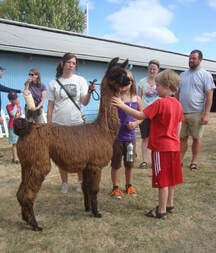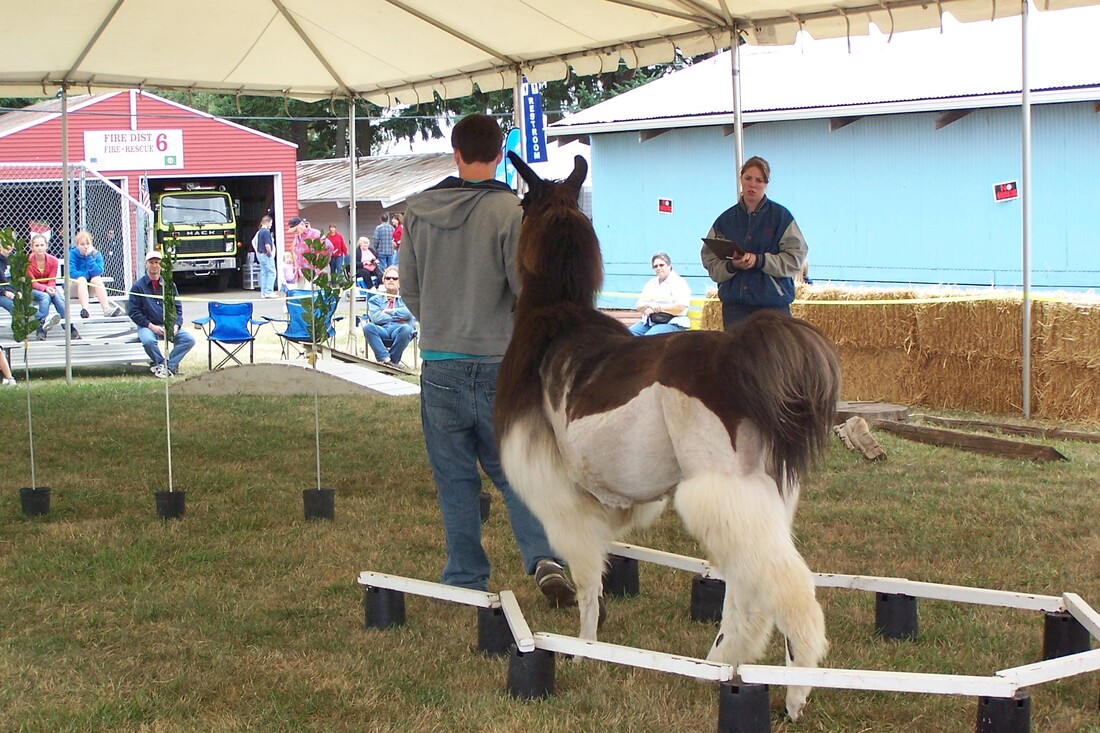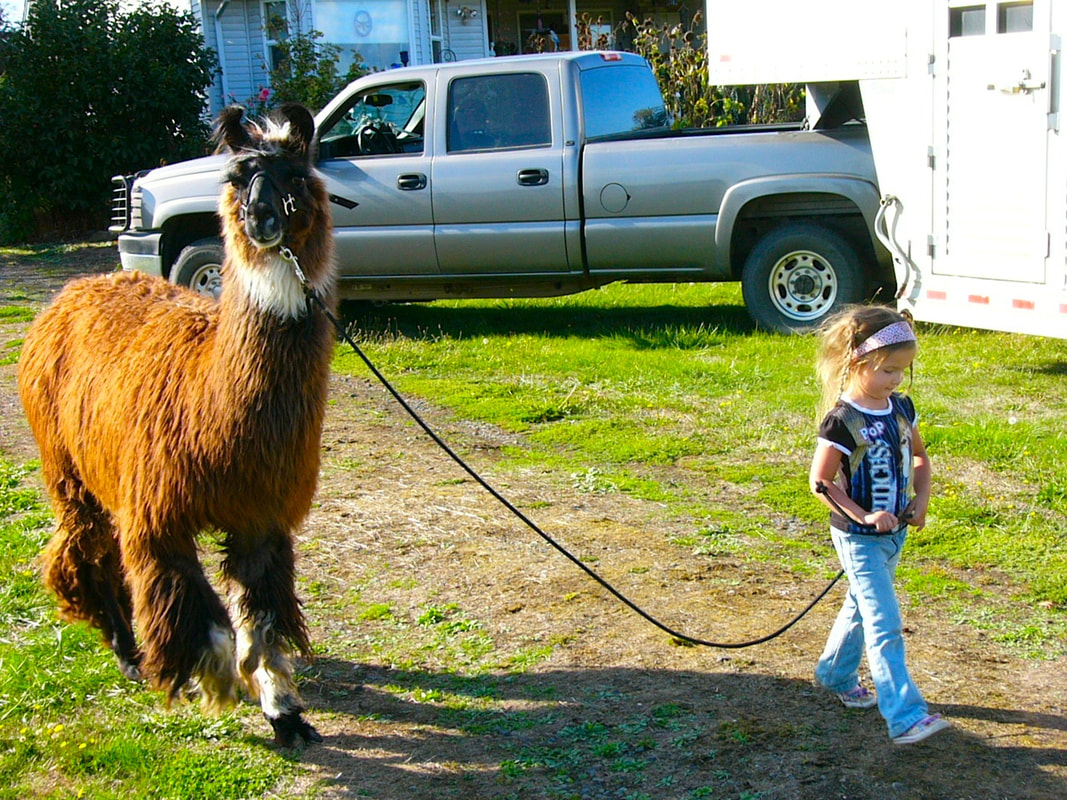|
4-H is a wonderful program. It teaches kids responsibility, leadership, communication, the importance of hard work, and how to strive to be better than you were yesterday. Any 4-H program is an excellent thing to be involved in, and I don't endeavor to drag down any other 4-H project you and your family might be interested in. I spent my whole childhood in a llama 4-H club, so I may be a little biased when I say I think they are the best option available. Here are five good reasons to take a strong look at llamas for your next 4-H project: #1 - The purchase of one llama can last a decade or more.Many livestock projects must be replaced at the end of the year. They may have gone to a market sale or into the breeding herd. So each spring you'll be hunting for the next lamb, steer, or hog. You can easily spend just as much on a top-end market animal as you would on one llama that could be your child's project for a decade or more. #2 - Obstacle Classes#3 - Your llama project will not go to a market sale at the end of the year I think market programs are a great thing, and I participated in them myself for several years as a sheep 4-Her. But I also know that they aren't a good fit for every kid. It is still possible for 4-H kids to learn about earning money from their hard work using their llama project. While I was a high schooler in llama 4-H, I sometimes trained up young animals from other breeders, showed them at the fair, and then sold them as performance trained yearlings. I also maintained a small breeding herd to train and sell their offspring. #4 - Llamas are very safe#5 - Llamas are relatively easy to trainIt is wise to start out with an animal that is already lead trained and is used to having their feet picked up, but you can absolutely take it from there. You will not need to hire a professional coach or pay someone to train your llama for you. Your 4-Her and their llama will be an unstoppable team in no time if you have a 4-H leader or a mentor, and set aside time once a week to work with your llama.
0 Comments
Your comment will be posted after it is approved.
Leave a Reply. |
AuthorKyle Mumford is a third generation llama owner, and his family has owned llamas since 1980. Kyle and his wife Jerrika have a herd of approximately 25 llamas in Southwest Washington. Categories
All
|


 RSS Feed
RSS Feed